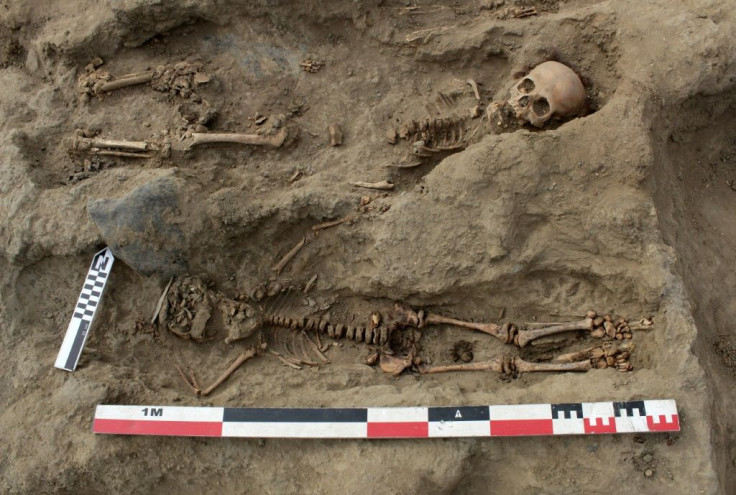Gut-Wrenching Sacrificial Site Where 250 Children Were Buried Found In Peru

Peruvian archaeologists on Wednesday discovered the remains of nearly 250 children supposedly sacrificed by the pre-Columbian Chimú civilization.
According to a video released by the Peruvian state media agency Andina, the ages of the children sacrificed ranged between 4 and 12 years. They are also assuming that the remains of 40 warriors are also there, along with those of the children, sacrificed between 13 and 15 centuries.
The Chimú civilization was specifically known for building Chan Chan, the largest city in pre-Columbian South America. According to history, Chimú civilization inhabited Northern Peru before the Inca invasion which led to their fall.
Archaeologists clarified that the children were sacrificed as a show of gratitude to the Chimú gods intending to stop the natural disasters associated with the El Niño phenomenon.
Andina further stated that there were four similar mass sacrifices made in a row between the years 1200 and 1450. Three of them involved children and the final one involved animals, they said.
The third finding of its kind at Pampa La Cruz, the notable tourist destination on the coast north of Lima and an archaeological site in Huanchaco-La Libertad, was a gut-wrenching site for the archeologists.
AFP News Agency quoted Chief Archaeologist Feren Castillo as saying, “"This is the biggest site where the remains of sacrificed children have been found."
Castillo believes that more remains are there waiting to be uncovered. “It's uncontrollable, this thing with the children. Wherever you dig, there's another one," Castillo added.
The children were slain during a wet weather period which prevailed as a result of El Niño, and were buried facing the sea. Some of them still had teeth and hair at the time of unearthing. The report further said the children and animals had evident signs of cuts in the sternum and dislocation of ribs.
The AFP report had also shed light on how Chan Chan, the largest mud brick city in the world was the humble adobe of powerful elites, highly trained craftsmen and farmers before it was preyed on by the army led by the Inca emperor Topa Inca Yupanqui in 1470.
Many huge civil engineering projects that irrigated the desert sands of coastal Peru are also attributed to Chimú civilization, the report read.
UNESCO scientists hinted at a massive erosion which may occur in recent future leading to an irreparable damage to the melting mud-bricks in the city of Chan Chan due to the exposure to more than 500 years of rainwater. They said that the damage will only worsen as a changing climate makes the weather unruly.
© Copyright IBTimes 2024. All rights reserved.








